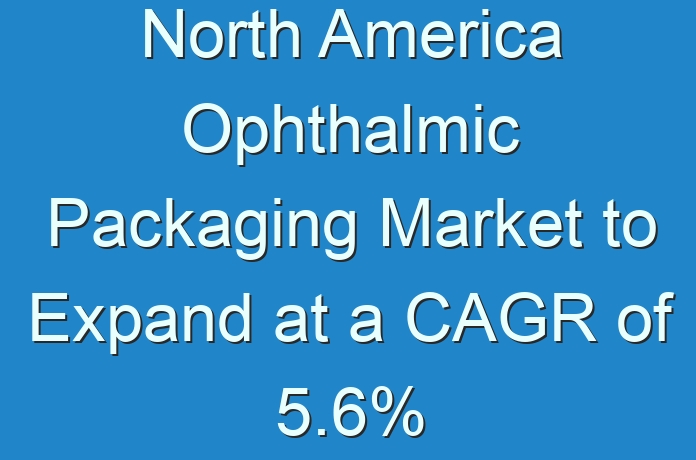
Rise in Importance of Sterile Packaging of Ophthalmic Products During COVID-19 Outbreak
In order to meet the growing demand for safe, sterile, and secure packaging & delivery of ophthalmic products during the COVID-19 outbreak, manufacturers are adopting innovative packaging formats. Companies in the North America ophthalmic packaging market are making use of highly sophisticated and adaptable aseptic filling lines to address packaging challenges. The diversity in sterile ophthalmic medications is urging packaging companies to make use of aseptic filling lines, since eyes are unquestionably one of the most sensitive and vital organs that can be exposed to coronavirus pathogens.
Sterile packaging of ophthalmic products has become a top priority for manufacturers in the North America ophthalmic packaging market. Stakeholders are aiming for errorless packaging since even the slightest eye irritation increases the risk for coronavirus infection.
CDER Regulations, GMP Necessary for Ensuring Product Quality
The North America ophthalmic packaging market is expected to advance at a modest CAGR of 5.6% during the assessment period. However, manufacturers need to comply with stringent regulations as suggested by the FDA’s Centre for Drug Evaluation and Research (CDER) for ophthalmic drug packaging components. These components demand the protection of the product’s quality, aid in administration, and maintenance of product sterility following initial seal breakage by the patient or consumer.
Manufacturers in the North America ophthalmic packaging market are following guidelines given by the WHO (World Health Organization) for good manufacturing practices (GMP). GMP is required for the appropriate system of quality assurance for the manufacturing of ophthalmic pharmaceutical products.
Want to know the obstructions to your company’s growth in future? Request a brochure @ https://www.transparencymarketresearch.com/sample/sample.php?flag=S&rep_id=81806
Advancements in Injection Molding Technology Help Avoid Physical Damage of Products
Apart from regulatory measures, stakeholders in the North America ophthalmic packaging market need to maintain the quality of product components. The quality of ophthalmic pharmaceutical product packaging is highly dependent on correct information and identification, protection against physical damage, and prevent any biological contamination. This is being achieved with the help of increasing their production for multi-dose plastic container closure systems (CCS). CCS is gaining prominence for liquid ophthalmic drug products.
Over seals and other tamper-evident features are being incorporated in ophthalmic pharmaceutical product packaging. LF of America – a provider of turnkey filling and packing solutions is gaining recognition for making advancements in the injection molding technology that increases the safety and flexibility of ophthalmic products.
Multi-dose Preservative-free Eye Droppers Gain Prominence in Complex Primary Packaging
The North America ophthalmic packaging market is expected to reach ~1,047 million units by 2030. Innovations in contract ophthalmic filling are translating into value-grab opportunities for manufacturers. These innovations include R&D for equal API (active pharmaceutical ingredient) delivery in packing and filling solutions and 100% preservative free formula, which help to avoid consumer or patient complaints about burning sensation after use.
Since single-dose sterile single-dose containers are questionable for an environmental point of view, manufacturers in the North America ophthalmic packaging market are developing multi-dose preservative-free eye droppers. These solutions are gaining popularity in complex primary packaging applications with the addition of filters, clip closures, and foams in order to protect the residual solution in vials.
Increased Flow Control in Packaging Complaint with ISO Standards Bolstering Credibility
Customization of standard containers, dropper, and closures is helping companies in the North America ophthalmic packaging market gain a competitive edge over other market players. Impressive designs and sizes in plastic packaging are generating business opportunities for manufacturers. Manufacturers are boosting their output capacities in HDPE (High-density Polyethylene) materials and tamper-evident systems.
Increased flow control, drug compatibility, and barrier properties are being borne in mind before innovating in ophthalmic packaging solutions. Companies in the North America ophthalmic packaging market are adhering to ISO (International Organization for Standardization) guidelines for developing packaging that is manufactured in cleanrooms.
North America Ophthalmic Packaging Market: Overview
- According to Transparency Market Research’s latest report on the North America ophthalmic packaging market for the forecast period of 2020–2030, the market is estimated to grow due to high prevalence of eye disorders, along with the growing demand for brand enhancement and differentiation in ophthalmic packaging
- The North America ophthalmic packaging market is expected to increase 1.8 times of the current market value by the end of 2030. Ophthalmic packaging has become of high importance to protect the formulation from external environment to keep the efficacy of the drug intact to maintain its quality and safety throughout its shelf life, which is likely to augment its sales in the years to come.
Looking for exclusive market insights from business experts? Request a Custom Report
Single-dose Eye Drop Packaging an Innovative Alternative to Traditional Ophthalmic Medication Packaging
- Ophthalmic diseases and eye problems require medication, which is mostly stored in multi-dose containers and dropper bottles. Most ophthalmic medications are made using a simple solution; however, the dropper bottles have limitations associated with designs. Major issues for ophthalmic packaging designs have been storage issues and precise dosing.
- Challenges associated with traditional eye drop packaging have led many pharmaceutical companies to launch novel ophthalmic packaging options. They have pursued these alternatives by contracting with packaging and filling companies. Unit-dose packaging overcomes the limitations of traditional ophthalmic medication packaging.
- Cost-effectiveness and durability have made multi-dose packaging a widely accepted choice for ophthalmic packaging. However, long-term storage can lead to the solution being in the dropper for a long time, which might result in chemical interaction with the packaging material. This can corrupt medication, causing irritation, and burning sensation upon application. Furthermore, many ophthalmic medications require exact dosages to be applied in each eye, which is a challenge with multi-dose packaging solutions.
- Thus, single-dose packaging allows overcoming both these challenges without compromising on the quality of the product
Read Our Trending Press Release Below: https://www.prnewswire.co.uk/news-releases/increasing-adoption-of-android-phones-to-underscore-growth-in-mobile-applications-market-from-2020-to-2030-tmr-892827477.html





